
This blog looks at the way that textbooks cover children’s rights. It is part of a series of blogs on this site published to encourage debates around a new GEM Report Policy Paper: Between the Lines, which looks at the content of textbooks and how it reflects some of the key concepts in Target 4.7 in the UN Sustainable Development Goals (SDGs).
By Christine Min Wotipka, Associate Professor (Teaching) of Education at Stanford University
Dramatic changes in the way we think of children have occurred around the world over the past century. The notion of children as small adults, or in a stage of becoming adults, has been replaced with one that consider children as being in a unique stage of identity. This means children are viewed as having rights not only as humans, but also as children.
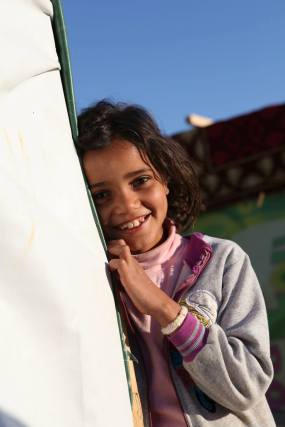
Syrian Refugee in Lebanon. Credit: Justine Redman
At the same time, children are seen as having human capital potential – educate them now and they will mature into contributing members of society and the labor force. However they are viewed, the global ascendancy of children can be measured in several interesting ways, including how they are represented in school textbooks.
On one hand, there has been rapid growth in international efforts focused on the rights of children. Among the most significant is the Convention on the Rights of the Child (CRC), now ratified by 195 countries. Within all international human rights treaties, violations against children is one of the most frequently mentioned.
Children’s rights are also a concern of a growing number of international governmental and non-governmental organizations such as Peace Child International and the International Save the Children Alliance. Not only has the number of these organizations increased, but so, too, have the number of countries whose citizens are members of such organizations. Children are central to many of the Sustainable Development Goals as well.
School textbooks, we argue, play a critical role in how countries display and promote their values. Currently over 90 percent of school-age children around the world attend primary school; roughly two-thirds are in secondary school. Once there, students spend the majority of their classroom time with textbooks.
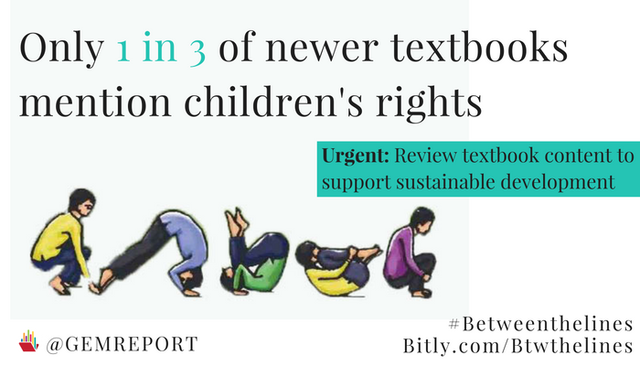 Research being conducted by my colleagues and I has shown dramatic changes in school textbooks over the past century. Exposure to human rights topics is the norm in most countries. Specific to children, we find that among newer textbooks, 1 in 3 mention children’s rights. About 1 in 5 refer to children as victims. These changes are significant compared with textbooks published in prior decades and they are occurring in all regions of the world.
Research being conducted by my colleagues and I has shown dramatic changes in school textbooks over the past century. Exposure to human rights topics is the norm in most countries. Specific to children, we find that among newer textbooks, 1 in 3 mention children’s rights. About 1 in 5 refer to children as victims. These changes are significant compared with textbooks published in prior decades and they are occurring in all regions of the world.
In their 30-year effort to achieve a child-centered system of education, and under the guidance of the 2005 National Curriculum Framework, textbooks from India provide some interesting examples. In Social and Political Life, read by 8th graders, students learn The Fundamental Rights in the Indian Constitution, including the prohibition against employment of children under 14 years of age. The trafficking of children and child marriage are also raised.
Discussion of child rights in these textbooks are not restricted to just India. For example, the book asks children to consider how Indian secularism differs from that of other democratic countries. In a sidebar example is a description of how many children in the United States start their school day by reciting the Pledge of Allegiance, which includes the phrase “under God.” It goes on to say that even though children have the right to not recite the Pledge if it conflicts with their beliefs, many legal challenges have been raised due to what is seen as a violation of the separation between Church and State guaranteed by the First Amendment of the U.S. Constitution.

ARETE/Ivan Flores/GEM Report
How groups and individuals are depicted in school curricula contributes to children’s understandings of themselves and others. As the new GEM Report policy paper shows, positive and inclusive materials can influence whether children from a minority ethnic group think they can get involved in politics or whether a girl believes she can become an engineer.
Similarly, it has been argued that countries whose textbooks teach children about their rights end up with children who grow up to be better prepared to engage as active citizens and to support human rights.
There is little doubt that the world is paying more attention to the unique rights of children. Such efforts trickle down into the hands of children during the school day. What is needed is a better understanding of why some countries do a better job of including empowering images of children. What characteristics of countries matter? Wealth? More democracy? A clean record on human rights violations? Or perhaps connections to other countries that actively promote the rights of children? Emulation is a strong force – among the children who read textbooks as well as among the countries that look to others, typically in their region, as they revise them.
As we celebrate the world’s growing attention and concern for the rights of children, let us do what we can to make children aware of these rights. And let us not gloss over the importance of textbooks for helping us do that. With a better understanding of themselves and other children, the next generation is better prepared to be defenders of rights for all.
Like this:
Like Loading...

 In addition to the explicit information that students learn, textbooks convey implicit messages and ideas through text and images. Ideally the types of people and relationships depicted in our textbooks will reflect the diversity of human experiences in our societies. For example: are men and women equally represented? What sort of activities are they shown doing, and what messages does that send about what boys and girls should strive for, or how they should act or behave now and in the future? Continue reading
In addition to the explicit information that students learn, textbooks convey implicit messages and ideas through text and images. Ideally the types of people and relationships depicted in our textbooks will reflect the diversity of human experiences in our societies. For example: are men and women equally represented? What sort of activities are they shown doing, and what messages does that send about what boys and girls should strive for, or how they should act or behave now and in the future? Continue reading 
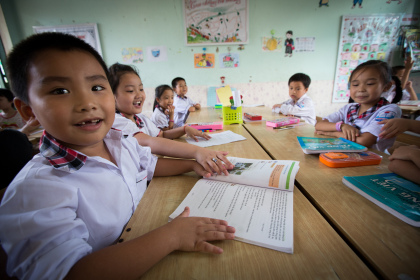 However, the development of good textbooks and curricula is a never-ending process that requires constant revision, upgrading and improvement. Despite Viet Nam’s progress to eliminate gender disparities and achieve gender equality in education, gender discrimination and bias still remain prevalent in many different forms, one of which is through textbooks.
However, the development of good textbooks and curricula is a never-ending process that requires constant revision, upgrading and improvement. Despite Viet Nam’s progress to eliminate gender disparities and achieve gender equality in education, gender discrimination and bias still remain prevalent in many different forms, one of which is through textbooks.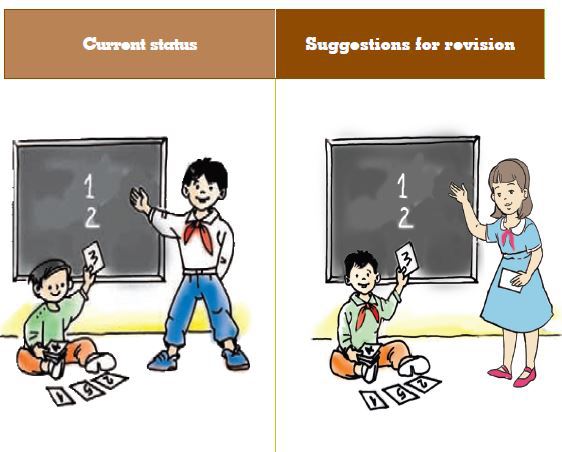

 Research being conducted by my colleagues and I has shown dramatic changes in school textbooks over the past century. Exposure to human rights topics is the norm in most countries. Specific to children, we find that among newer textbooks, 1 in 3 mention children’s rights. About 1 in 5 refer to children as victims. These changes are significant compared with textbooks published in prior decades and they are occurring in all regions of the world.
Research being conducted by my colleagues and I has shown dramatic changes in school textbooks over the past century. Exposure to human rights topics is the norm in most countries. Specific to children, we find that among newer textbooks, 1 in 3 mention children’s rights. About 1 in 5 refer to children as victims. These changes are significant compared with textbooks published in prior decades and they are occurring in all regions of the world.
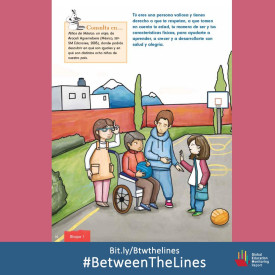
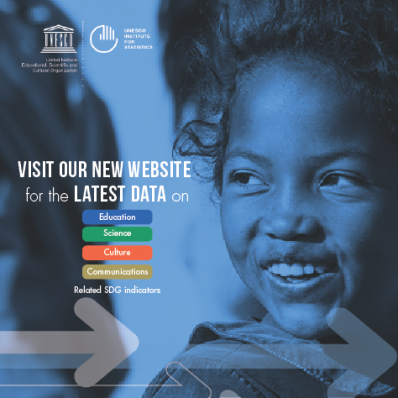 The
The 
 By Carmela Maria Salzano, International Development Consultant
By Carmela Maria Salzano, International Development Consultant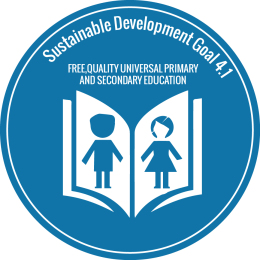 National learning assessments, which are a key source of the global data for SDG 4.1, show the extent to which ‘all girls and boys….[are acquiring] relevant and effective learning outcomes’ while revealing important information on the types of knowledge and skills now valued by different education systems. But they can also tell us much about how far governments have integrated their commitments to equity and raising learning standards for all learners across all components of their education systems.
National learning assessments, which are a key source of the global data for SDG 4.1, show the extent to which ‘all girls and boys….[are acquiring] relevant and effective learning outcomes’ while revealing important information on the types of knowledge and skills now valued by different education systems. But they can also tell us much about how far governments have integrated their commitments to equity and raising learning standards for all learners across all components of their education systems.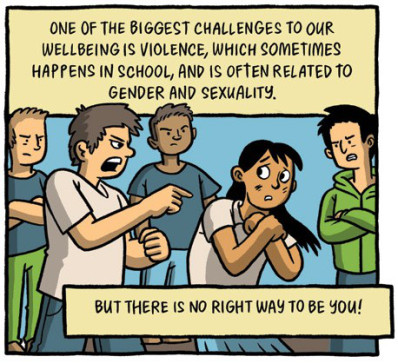 Frequently the violence that children and young people experience in or around school is related to gender norms and expectations, undermining not only inclusive, quality education but also gender equality. School-related gender-based violence shares the same root causes as the pervasive gender-based violence that remains a barrier to gender equality in all societies. These include systematic inequalities and unequal power dynamics, as well as stereotypes and restrictive attitudes and expectations of how boys and girls should behave. School-related gender-based violence affects all children, though girls are particularly vulnerable. Fear for girls’ safety in countries such as Afghanistan, Pakistan and Papua New Guinea have led parents to withdraw girls from school completely.
Frequently the violence that children and young people experience in or around school is related to gender norms and expectations, undermining not only inclusive, quality education but also gender equality. School-related gender-based violence shares the same root causes as the pervasive gender-based violence that remains a barrier to gender equality in all societies. These include systematic inequalities and unequal power dynamics, as well as stereotypes and restrictive attitudes and expectations of how boys and girls should behave. School-related gender-based violence affects all children, though girls are particularly vulnerable. Fear for girls’ safety in countries such as Afghanistan, Pakistan and Papua New Guinea have led parents to withdraw girls from school completely. 





